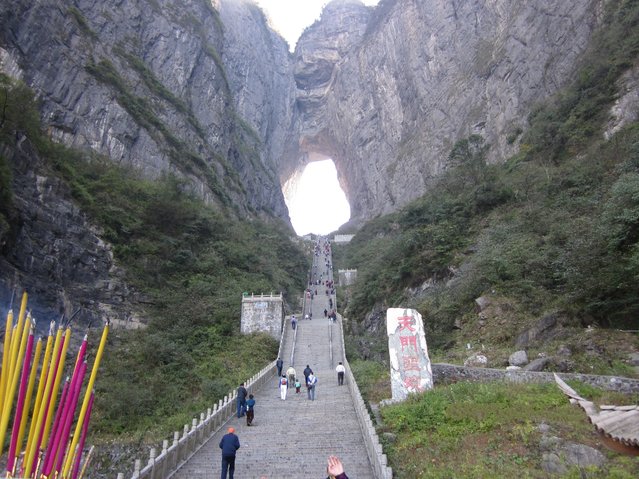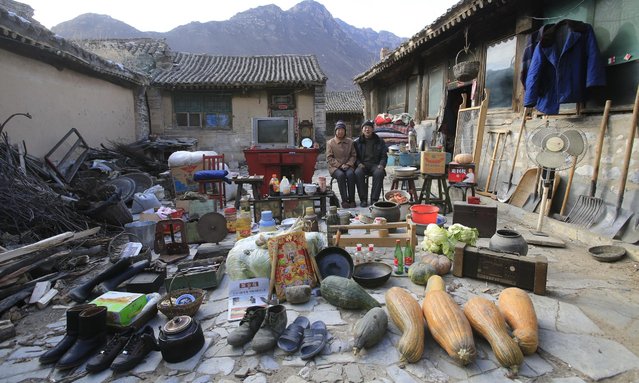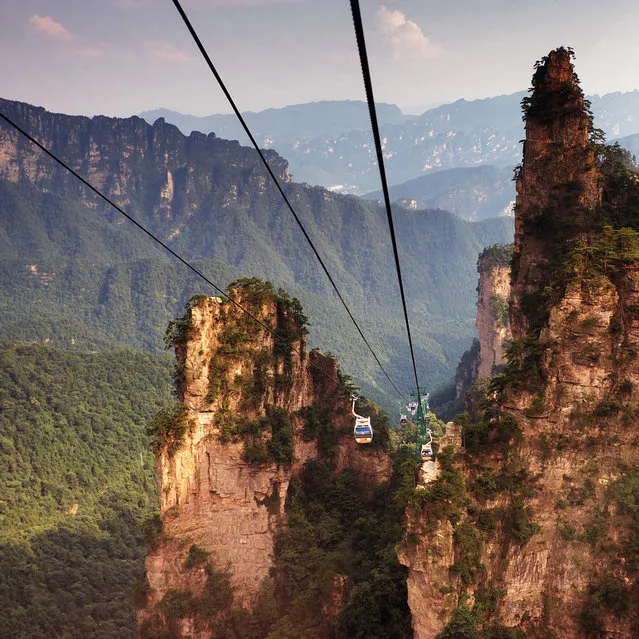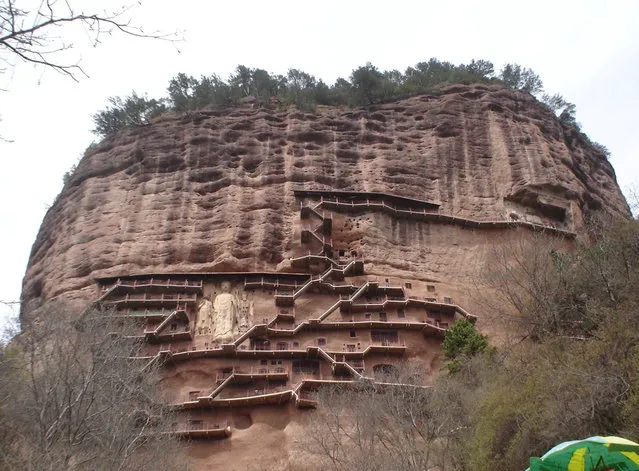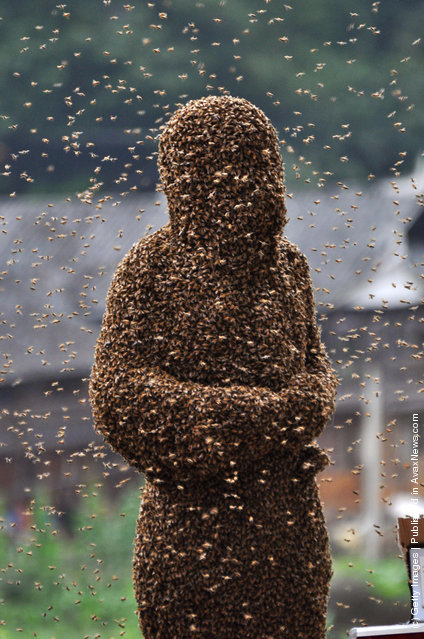
Bees cover beekeeper Lu Kongjiang as he competes in a “bee bearding” contest on July 16, 2011 in Shaoyang, Hunan Province of China. Wang Dalin won the contest after attracting 26.86kg of bees onto his body, covered only by a pair of shorts and swimming goggles. (Photo by ChinaFotoPress/Getty Images)
19 Jul 2011 10:44:00,post received
0 comments


